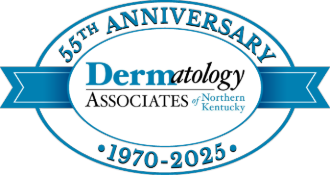 Skin cancer is a prevalent health issue that affects millions of individuals worldwide. It arises when skin cells undergo abnormal changes, often due to excessive exposure to ultraviolet (UV) radiation from the sun or tanning beds. Early detection and treatment are crucial for successful outcomes, and surgical intervention is often the primary method for removing cancerous growths. This article delves into the various procedures available for skin cancer removal, providing insights into their effectiveness, benefits, and considerations.
Skin cancer is a prevalent health issue that affects millions of individuals worldwide. It arises when skin cells undergo abnormal changes, often due to excessive exposure to ultraviolet (UV) radiation from the sun or tanning beds. Early detection and treatment are crucial for successful outcomes, and surgical intervention is often the primary method for removing cancerous growths. This article delves into the various procedures available for skin cancer removal, providing insights into their effectiveness, benefits, and considerations.
Types of Skin Cancer
Understanding the types of skin cancer is essential for determining the appropriate treatment. The three most common forms include:
Basal Cell Carcinoma (BCC)
Basal cell carcinoma originates in the basal cells of the epidermis. It is the most frequently diagnosed skin cancer and typically appears as a pearly or waxy bump. BCC rarely metastasizes but can cause significant local damage if left untreated.
Squamous Cell Carcinoma (SCC)
Squamous cell carcinoma arises from squamous cells, which are flat cells located in the outer layer of the skin. SCC may present as a firm, red nodule or a flat lesion with a scaly, crusted surface. While it is more aggressive than BCC, it is still highly treatable when detected early.
Melanoma
Melanoma is the most serious type of skin cancer, originating in melanocytes, the cells responsible for producing melanin. It can develop from existing moles or appear as new dark spots on the skin. Melanoma has a higher potential for metastasis, making early detection and treatment critical.
Importance of Early Detection
Early detection of skin cancer significantly increases the chances of successful treatment. Regular skin examinations, both self-exams and professional check-ups, can help identify suspicious growths or changes in existing moles. The ABCDE rule is a helpful guideline for recognizing potential melanoma:
- Asymmetry: One half of the mole does not match the other.
- Border: Irregular, scalloped, or poorly defined edges.
- Color: A variety of colors, including brown, black, tan, red, white, or blue.
- Diameter: Larger than 6 millimeters (about the size of a pencil eraser).
- Evolution: Changes in size, shape, or color over time.
Surgical Treatments for Skin Cancer
Surgery is often the first-line treatment for skin cancer, particularly for BCC and SCC. The choice of surgical procedure depends on the type, size, and location of the cancer, as well as the patient’s overall health.
Excisional Surgery
Excisional surgery involves the complete removal of the cancerous lesion along with a margin of healthy tissue. This procedure is typically performed under local anesthesia and is suitable for various types of skin cancer. The excised tissue is sent for pathological examination to ensure complete removal of cancerous cells.
Benefits of Excisional Surgery
-
-
- Complete Removal: This method ensures that the cancerous tissue is entirely excised, reducing the risk of recurrence.
- Pathological Confirmation: The examination of the removed tissue provides valuable information about the cancer type and stage.
-
Considerations
-
-
- Scarring: Depending on the size of the excision, scarring may occur.
- Healing Time: Recovery may take several weeks, and proper wound care is essential to prevent infection.
-
Mohs Micrographic Surgery
Mohs surgery is a specialized technique designed to treat skin cancers located in cosmetically sensitive areas, such as the face and neck. This procedure involves the stepwise removal of cancerous tissue, with each layer examined microscopically for cancer cells.
Advantages of Mohs Surgery
-
-
- High Cure Rate: Mohs surgery boasts a cure rate of up to 99% for non-melanoma skin cancers.
- Tissue Preservation: By removing only cancerous tissue, Mohs surgery minimizes damage to surrounding healthy skin, resulting in better cosmetic outcomes.
-
Limitations
-
-
- Time-Consuming: The procedure can take several hours, as each layer must be removed and examined before proceeding.
- Specialized Training Required: Not all surgeons are trained in Mohs surgery, so finding a qualified provider is essential.
-
Cryosurgery
Cryosurgery, or cryotherapy, involves freezing the cancerous tissue using liquid nitrogen. This technique is primarily used for superficial skin cancers and precancerous lesions.
Benefits of Cryosurgery
-
-
- Minimally Invasive: Cryosurgery is less invasive than traditional surgical methods, resulting in minimal pain and scarring.
- Quick Recovery: Patients typically experience a shorter recovery time compared to excisional surgery.
-
Considerations
-
-
- Limited Applicability: Cryosurgery is most effective for small, superficial lesions and may not be suitable for larger or deeper tumors.
- Potential for Recurrence: There is a risk that not all cancerous cells may be destroyed, necessitating further treatment.
-
Curettage and Electrodesiccation
This two-step procedure involves scraping away the cancerous tissue (curettage) followed by the application of an electric current (electrodesiccation) to destroy any remaining cancer cells.
Advantages
-
-
- Outpatient Procedure: Curettage and electrodesiccation can often be performed in a doctor’s office with local anesthesia.
- Minimal Downtime: Patients typically experience a quick recovery and can return to normal activities shortly after the procedure.
-
Limitations
-
-
- Scarring: There may be some scarring at the treatment site.
- Incomplete Removal: There is a possibility that not all cancerous cells are eliminated, which may require additional treatment.
-
Non-Surgical Treatments for Skin Cancer
In addition to surgical options, several non-surgical treatments are available for skin cancer, particularly for patients who may not be suitable candidates for surgery.
Radiation Therapy
Radiation therapy uses high-energy rays to target and destroy cancer cells. It is often recommended for patients with skin cancers located in areas where surgery may pose cosmetic or functional concerns.
Benefits of Radiation Therapy
-
-
- Non-Invasive: This treatment does not require incisions or anesthesia, making it suitable for patients with health concerns that preclude surgery.
- Effective for Sensitive Areas: Radiation therapy is particularly beneficial for cancers located on the face, ears, or other delicate regions.
-
Considerations
-
-
- Multiple Sessions Required: Patients typically undergo several outpatient sessions over a few weeks.
- Potential Side Effects: Side effects may include skin irritation, fatigue, and changes in skin texture.
-
Topical Treatments
Topical treatments involve the application of prescription creams or ointments directly to the skin to destroy cancer cells. These treatments are most effective for superficial skin cancers.
Advantages of Topical Treatments
-
-
- Minimally Invasive: Topical treatments do not require surgery and can be applied at home.
- Targeted Therapy: These treatments specifically target cancerous cells while sparing surrounding healthy tissue.
-
Limitations
-
-
- Limited to Superficial Cancers: Topical treatments are not suitable for deeper or more aggressive skin cancers.
- Potential for Skin Irritation: Some patients may experience redness, itching, or peeling at the application site.
-
Systemic Treatments
For advanced skin cancers, particularly melanoma, systemic treatments such as immunotherapy and targeted therapy may be employed to help the immune system combat cancer cells throughout the body.
Benefits of Systemic Treatments
-
-
- Comprehensive Approach: These treatments can target cancer cells that have spread beyond the skin.
- Innovative Therapies: Advances in immunotherapy have led to promising results for patients with advanced melanoma.
-
Considerations
-
-
- Potential Side Effects: Systemic treatments may cause side effects such as nausea, fatigue, and immune-related reactions.
- Long-Term Commitment: Patients may require ongoing treatment and monitoring.
-
Post-Treatment Care and Follow-Up
After undergoing treatment for skin cancer, proper post-treatment care is essential for recovery and monitoring for recurrence.
Wound Care
For surgical procedures, following the surgeon’s instructions for wound care is crucial. This may include:
-
- Keeping the area clean and dry.
- Changing dressings as directed.
- Monitoring for signs of infection, such as increased redness, swelling, or discharge.
Regular Follow-Up Appointments
Regular follow-up appointments with a dermatologist are vital for monitoring the skin for any new growths or changes. During these visits, the dermatologist may perform full-body skin examinations and recommend additional treatments if necessary.
Lifestyle Modifications
Adopting a healthy lifestyle can support recovery and reduce the risk of skin cancer recurrence. This may include:
-
- Sun Protection: Using broad-spectrum sunscreen, wearing protective clothing, and avoiding tanning beds.
- Healthy Diet: Consuming a balanced diet rich in fruits, vegetables, and whole grains to support overall health.
- Regular Skin Checks: Performing self-exams to monitor for any changes in the skin.
Understanding the various procedures available for skin cancer removal is crucial for making informed decisions about treatment. Early detection and prompt intervention significantly enhance the chances of successful outcomes. Whether through surgical methods like excisional surgery and Mohs surgery or non-surgical options such as radiation therapy and topical treatments, patients have a range of effective choices. Regular follow-up care and lifestyle modifications play a vital role in ensuring long-term health and preventing recurrence. If you notice any changes in your skin or have concerns about skin cancer, consult a healthcare professional for guidance and support.
We Have a Mohs Surgery Center With Experienced Providers and Staff
Mohs micrographic surgery is a specialized technique for the removal of skin cancer. Developed by Dr. Frederic E. Mohs in the 1930s. It is usually used for cancers at high risk for recurrence, including those on the nose, lips, eyelids or ears; those that are large, poorly-defined or recurrent after prior treatment; and those with aggressive microscopic features. Here at Dermatology Associates, Dr. Mark Zalla and Dr. Elliott Campbell perform Mohs Surgery. The Mohs Procedure allows them to microscopically examine the entire margin around and beneath the skin cancer. This precise examination ensures complete removal of the cancer while avoiding removal of excess normal skin, leaving a smaller wound and less scar.
> Learn More
Contact Us (859-795-5020) for a Mohs Surgery Consultation
—
 About Dermatology Associates of Northern Kentucky
About Dermatology Associates of Northern Kentucky
Dermatology Associates of Northern Kentucky offers a range of services for all age groups, including general and pediatric dermatology, dermatologic surgery, Mohs Micrographic surgery, laser and cosmetic procedures, and Dermatopathology.
> Learn More

 About Dermatology Associates of Northern Kentucky
About Dermatology Associates of Northern Kentucky